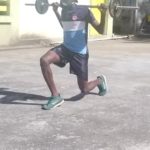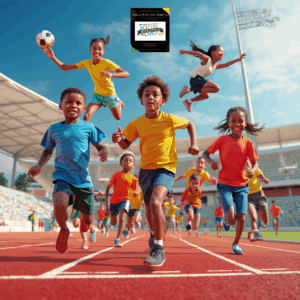As coaches, in order to get the most out of your training, you must follow some basic simple training principles.
Overloading
Before one starts thinking about what OVERLOAD is, there is a very important acronym that we must know in order to unlock the principle of Overloading. The acronym is F.I.T.T. Each letter has it meaning therefore letter
F – FREQUENCY – how often does one train per week.
I – INTENSITY – how hard does one train during each session.
T – TIME – how long is the session or activity.
T – TYPE OF EXERCISE – what are the exercises that athlete is doing.
With this information one can simply and quickly identify when one is giving too much of an increase in any of the F.I.T.T variables to any athletes’ training. In other words, we can readily identify when a coach is overloading (giving the athlete more than normal) the athlete in his charge.
For example, John trains three (3) times per week with coach, Tim. The coach may think that to improve John’s preparation he should step up to an additional two days of training. However, John’s preparation may not yet be ready for the increased load. He may find them too painful to manage.

Kriston Wyllie training with weights while using a high altitude mask which is an example of overload.
Specificity
This principle is one of the simplest to understand. This is very unique and is different based on the sport and or playing position. This means that the athlete must be trained based on the particular demand of his/her event or sport. In other words, do only things that will benefit the athlete based on what his sport/event needs at the particular time in his development and preparation. When an athlete trains, he or she repeatedly performs activities to prepare for the exact requirements of the sport. In time, the athlete’s body becomes better able to meet the demands of the sport as it adapts to the training regimen. For example, a sprinter will do much speed work while a thrower will work more on getting stronger.
Reversibility
This means that an athlete can lose the effects of training when they stop, and can gain the effects when they begin to train again. “You lose what you don’t use”
De-training occurs within a relatively short time period after an athlete ceases to train. Performance reductions may occur in as little as two weeks or sooner.
What is interesting is that strength levels after det-raining are rarely lower than the pre-training levels. This means that training has a residual effect even when it is discontinued. When the athlete returns to training, the rate of strength acquisition is high.
The Variation Principle
This concept suggests that minor changes in training regimens yield more consistent gains in sport performance.
Training programs for virtually every sport include variations in intensity, duration, volume, and other important aspects of practice. We can also start thinking about variation in activities we as coaches use. For example, a track coach can use a hiking session to work on cardiovascular fitness instead of using only continuous runs. This is very important for kids since they seem to get bored easily from doing one set of repetitive activities in practice. Remember they enjoy training better when they have fun being engaged in it.
Individualization
This dictates that sports training should be adjusted according to each athlete’s characteristics and needs: chronological age, training age, maturity, gender, rate of progress and previous experience.
“No two persons are the same”.
The goal of individualization is to capitalize on each athlete’s strengths, exploit their genetic potential, and strengthen their weaknesses.
The Recovery Principle
This principle dictates that athletes need adequate time to recuperate from training and competition. Many believe that an athlete’s ability to recover from workouts is just as important as the workout itself.
It is during rest periods that the athlete’s body adapts to the stress placed upon it during intense workout sessions and competitions. Rest also provides time for a mental preparation and reflection.
According to one author on training principles stated that“the Recovery Principle applies both to immediate rest needed between bouts of exercise, as well as to longer time intervals of several hours to about two days”.
When you sprint as fast as possible or lift heavy weights, you will notice that your heart still pumps hard and you breathe heavy for a while after you stop. The term “metabolic recovery” describes what takes place after exercise as your body returns to homeostasis, its normal, stable resting state. Your metabolic rate or oxygen consumption can be elevated for hours after you stop exercising.
Recovery is one of the principles that needs much attention since an athlete’s performance can be limited if this is not managed properly.
The same article on training principles spoke highly of ways/tips/methods that one could use when doing recovery. Stretching after workouts, using whirlpools and massage scan all help the muscles rest and rebuild more quickly while minimizing muscle soreness. Upright activity in water also assists with recovery.

Ozari Williams, applying a recovery method of massage to Ulanda Lewis after a training session.
Please leave your comments below.
Our next article is, The Method of Training.






